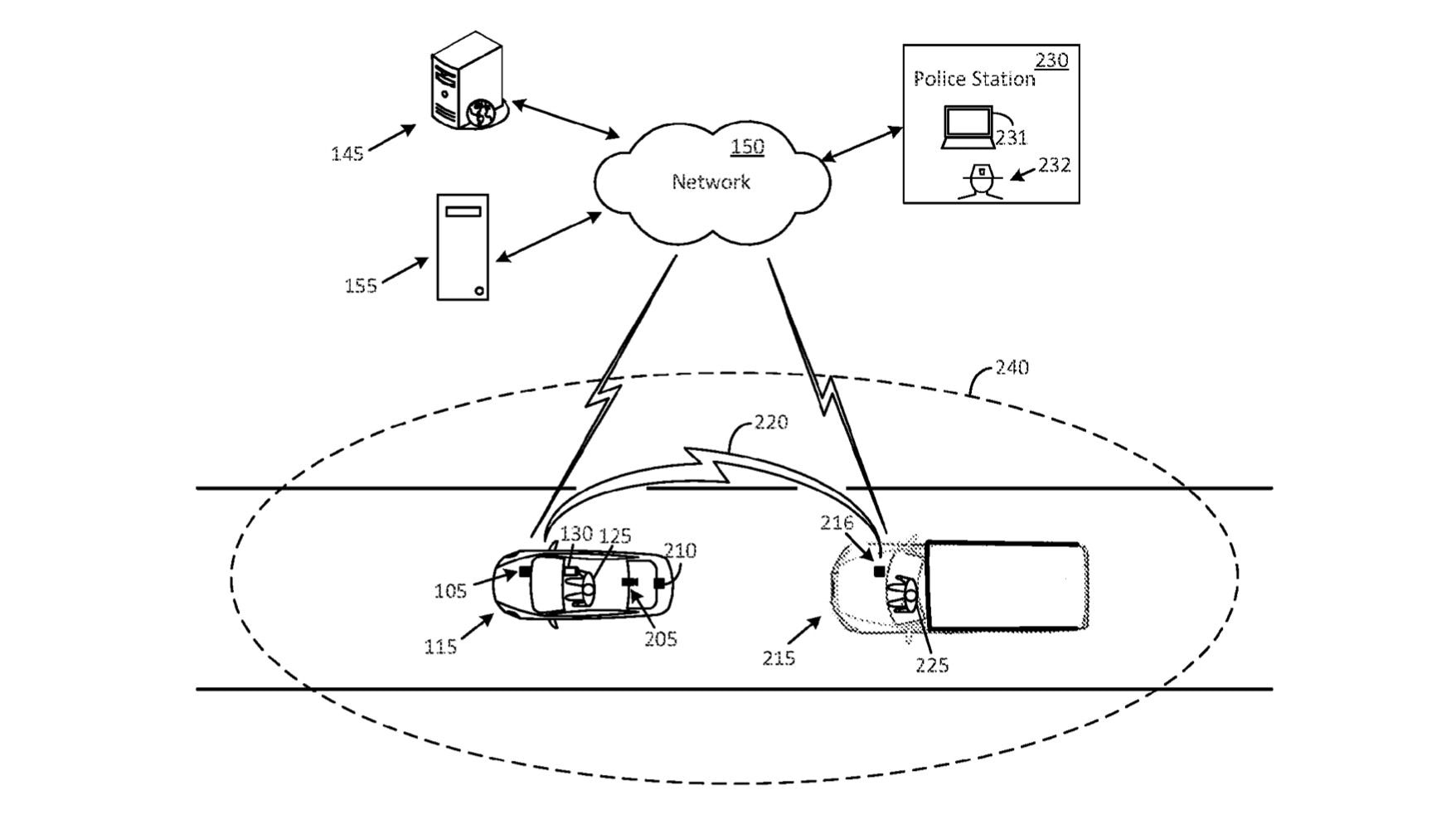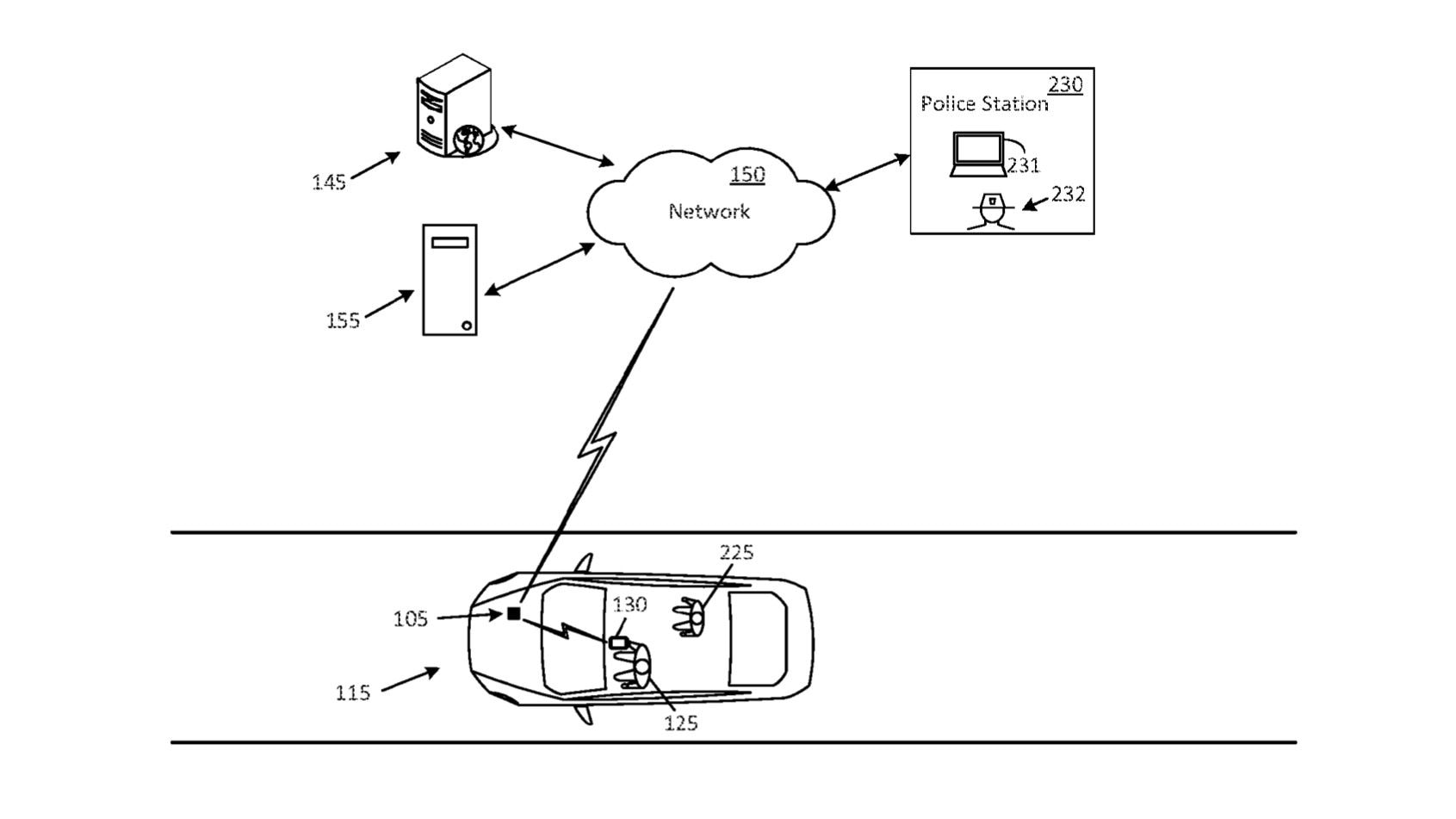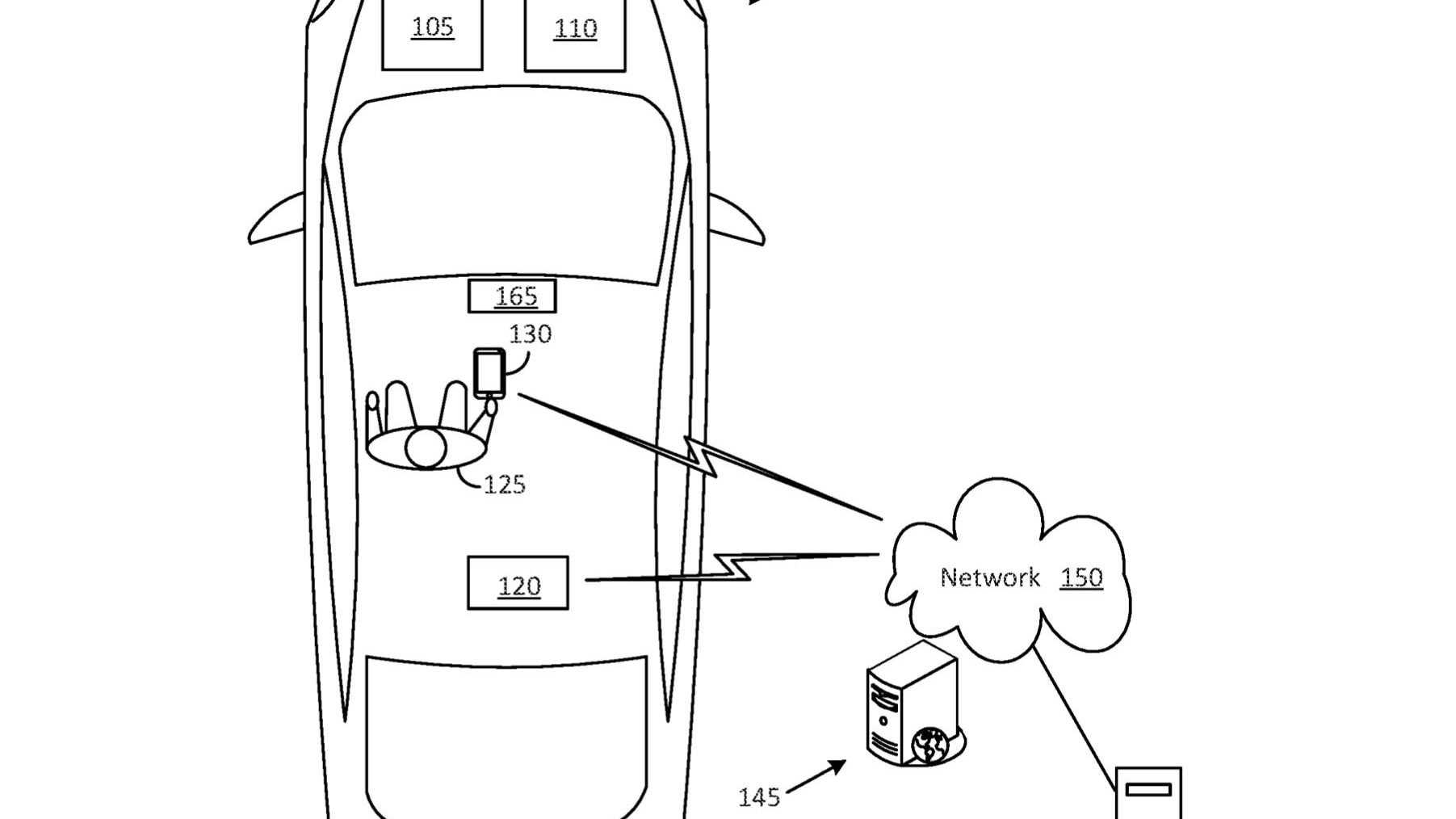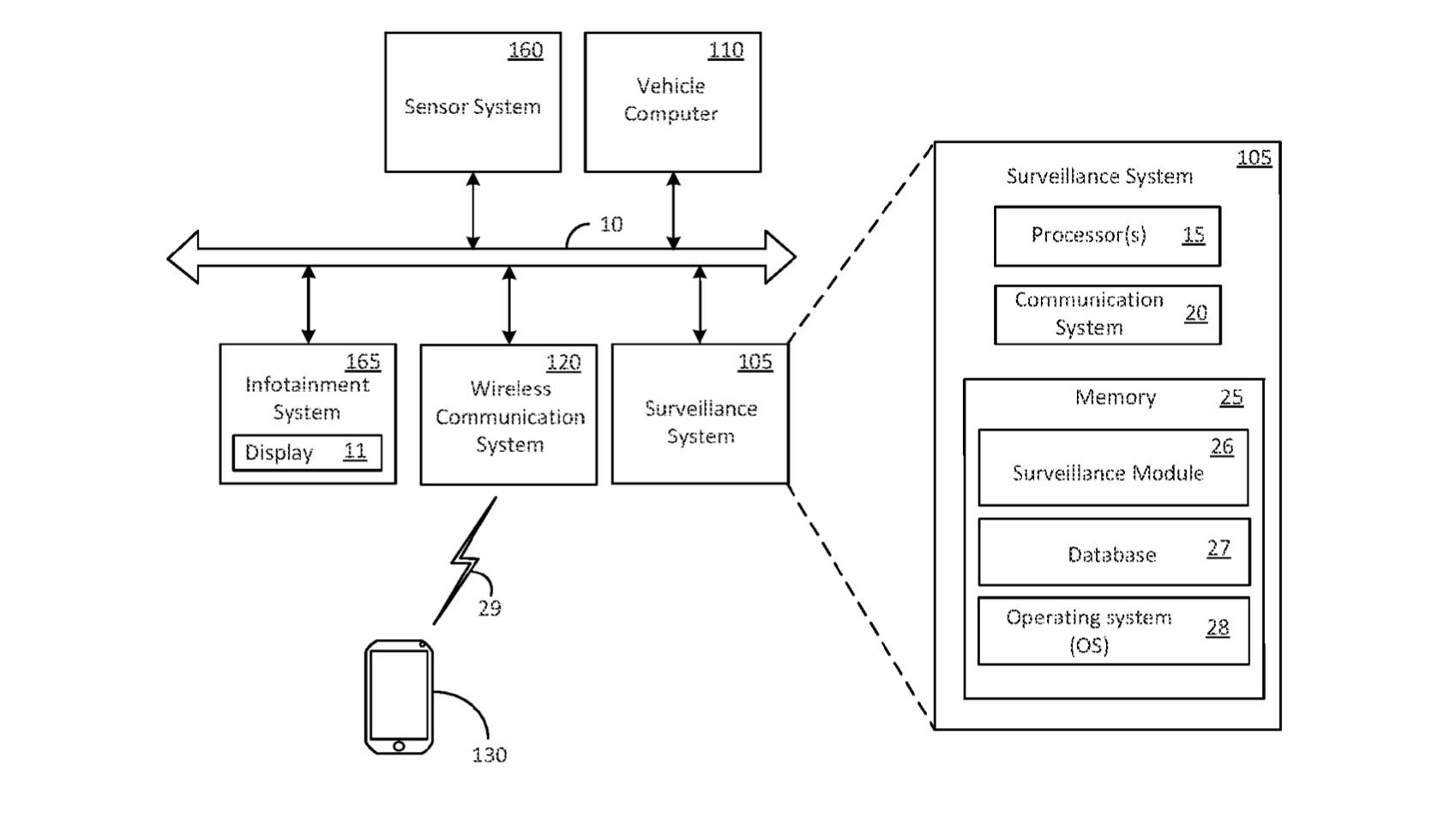Ford is developing technology to help drivers confirm if they are being stalked.
As detailed in a Ford patent application published by the United States Patent and Trademark Office (USPTO) on April 6, 2023 (but filed October 6, 2021), the automaker is looking at ways to use vehicle connectivity to prevent stalking by showing drivers that they are being followed.
With vehicles connected to a cloud server, Ford envisions allowing individuals to submit "a request to perform a surveillance operation" from a smartphone or other device. The system then tracks the movement of a targeted vehicle to determine if the person requesting surveillance is being followed.

Ford stalking detection system patent image
This surveillance can be conducted in a number of ways, according to the patent application. The system can set up a geofence, tracking whether a following vehicle gets too close, or indicating whether a driver is hiding behind another vehicle to avoid being spotted. The same devices used for driver aids, including lidar, ultrasonic sensors, and cameras, could be used for this, Ford suggests, adding that drivers could also capture images of an alleged stalker's vehicle.
The potential for surveillance goes beyond tracking another vehicle. If two cars are equipped with vehicle-to-vehicle (V2V) communication, one could request information from another, allowing a driver to see the vehicle identification number (VIN) of a given vehicle to help identify it or the person driving. If a person believes they are being stalked, this information could also be sent to the police, according to the patent application.

Ford stalking detection system patent image
This technology could also be applied to ride-hailing vehicles operated by companies such as Uber and Lyft, as well as autonomous vehicles, according to Ford. The automaker also suggests that it could be used on individuals traveling in the same vehicle, presumably a ride-hailing vehicle or bus by using personal devices.
A patent application does not correspond to production plans, and this idea faces at least one big technical hurdle. While V2V has been discussed for years, with Ford predicting that it could eliminate traffic lights, the number of vehicles equipped with the tech isn't very large. And while the intentions are good, there may be legal implications to tech that allows drivers to surveil each other at will.



